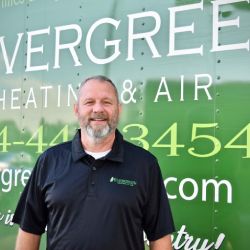Most of us take our vehicle to the garage for maintenance every 3,000 to 5,000 miles and just trust that the mechanic will take care of whatever maintenance service it is due to have. Others are more hands-on and want to know exactly what will be done. If you fall into the latter category, you might have the same inclination to learn what happens when you call an HVAC professional to schedule air conditioning maintenance. Here are the various tasks that are included in your annual air conditioning maintenance visit:
- Thermostat- The thermostat is inspected and tested to be certain it is working properly. If need be, it is calibrated so that it communicates properly to the HVAC equipment as to when to turn on and when to turn off. A step that you can take is to make certain there aren’t any heat sources, such as light bulbs, located too close to the thermostat.
- Connections- There are several electrical connections involved with HVAC systems and it is imperative that they have a good connection and that there aren’t any uninsulated wires that could pose a fire hazard. During air conditioning maintenance, the wiring and connections will be inspected.
- Lubrication- Since your HVAC system has various moving parts, it is necessary to keep them properly lubricated so that damage doesn’t occur. It takes experience to use the right amount of lubrication so that everything works properly.
- Condensate Drain Line- A clog in the drain line can pose all sorts of problems, including mold and other moisture issues, not to mention cause your HVAC to stop working entirely since it cannot convert the humidity to water when there is no place for the water to go. During air conditioning maintenance, the line will be checked to see if it needs cleared and also to see if any leaks could result in water damage.
- Inspect Coils and Other Parts- If the coils are clogged, dirty, or damaged, you’ll face a higher-than-normal utility bill as the unit has to work harder. Coils and other parts of the HVAC system are thoroughly cleaned and any bent coil fins are resolved. Other parts are checked for wear and tear so that any problematic parts can be replaced before they can cause other damage that could be costlier to resolve.
- Inspect Ductwork- Even the newest, most energy-efficient HVAC equipment cannot operate efficiently if there is a problem with the ductwork, so repairs or replacement for bad ductwork is an important part of air conditioning maintenance.


